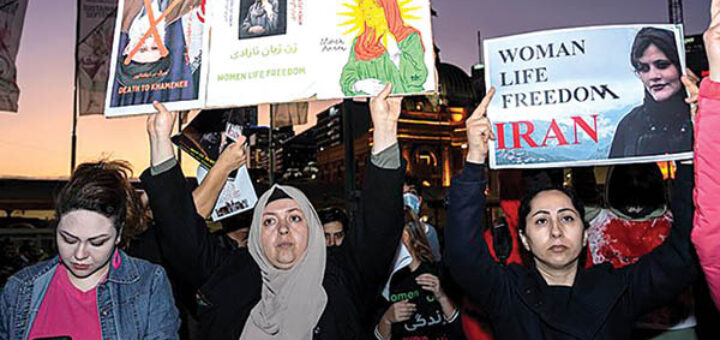Iran Protests Explained: Who is Mahsa Amini?

Khai Choual, Contributor
Protests in Iran have intensified since September 2022 over the death of 22- year-old Mahsa Amini. Amini was a Kurdish woman from Saqquez, a Kurdish region in western Iran, who was visiting her family in Tehran. According to Time Magazine, Amini was arrested on Sept. 13, 2022, by the morality police for not wearing the hijab as maintained by Iran’s hijab law.
The morality police or Guidance Patrol is part of Iran’s national police. The morality police was established in 2005 to endorse “Islamic morals and laws” instituted after the Islamic revolution in 1979.
Family and eyewitnesses have said Mahsa Amini was beaten while in a police van to the detention centre where she would be re-educated on Iran’s hijab rules when she was picked up by the morality police.
Iran’s government officials have insisted that Amini was not beaten by the police.
Time Magazine also said that the morality police stated that Amini was taken into a detention centre to re-educate her for violating Iran’s laws on the hijab and insisted that she had collapsed and suffered a heart attack and later on fell into a coma. Amini later died on Sept. 16, 2022, in a Tehran hospital.
According to Iran Front Page, Interior minister Ahmad Vahidi stated on the state broadcasting network, “Based on objective observations, interviews with witnesses, reports from relevant agencies, and other investigations, there was no beating involved.”
The police have released CCTV footage of Amini collapsing on the ground.
Family members of the Iranian woman have denied Amini ever having a heart condition and declared that Iran is lying about her death, and according to Amini’s father, Amjad Amini, doctors have refused to see his daughter after her death.
“They’re lying. They’re telling lies. Everything is a lie … no matter how much I begged, they wouldn’t let me see my daughter,” Amjad Amini told BBC Persia as per CNN’s article.
Leading up to the funeral, Amini’s body was covered up besides her feet and face and her father was only able to see her feet which he noticed bruising.
Her death later sparked outrage and protest worldwide with issues ranging from oppression in the Islamic regime and economic sanctions. Several growing reports of repressive acts against women, including those not complying with the state’s dress code and being barred from entering any government offices, banks and schools.
Videos have emerged all over social media of police officers detaining protesters and many women all over Iran have been protesting in the streets without their hijab and cutting their hair to show solidarity with Amini and many other women across Iran.
Protests and clashes with the police have emerged all over the state and the government has issued internet blackouts. Iranians have reported firm-regulated internet access. Even before the blackout, the Islamic revolution armed forces already had strict censorship, blocking many Iranians from using social media platforms such as Facebook, Twitter, YouTube and many others.
According to the country’s semi-official ISNA news agency as per CNN, Iran’s minister of communications issued a warning that there could be many more internet disruptions “for security purposes and discussions related to recent events.”
In an article by BBC News, President Ebrahim Raisi has established several new measures for enforcing head scarf wear this summer. One of the new measures is surveillance cameras to assist in spotting any unveiled women and another measure is a mandatory prison sentence for anyone opposing hijab rules on social media platforms.
The United Nations has called for an independent investigation into Amini’s death.
“We call on the Iranian authorities to hold an independent, impartial and prompt investigation into Ms. Amini’s death, make the findings of the investigation public and hold all perpetrators accountable.”




